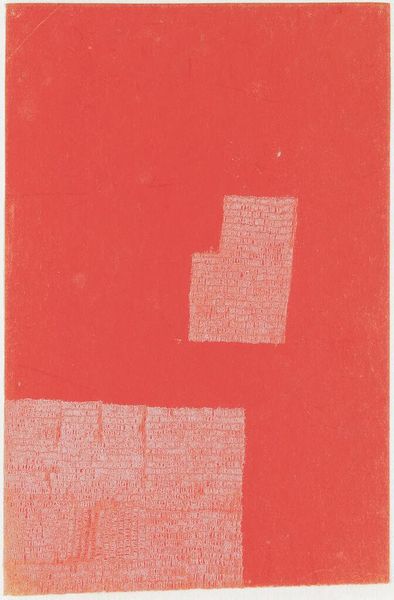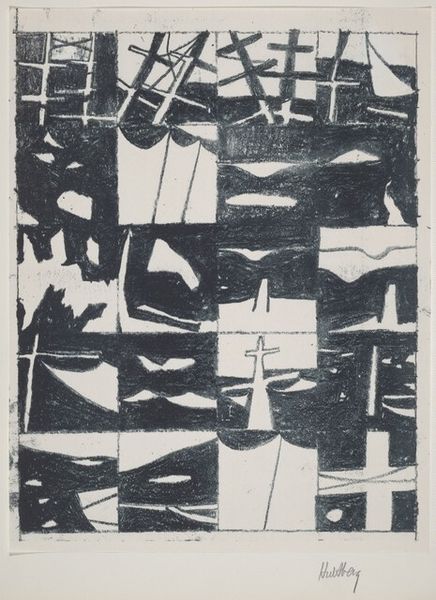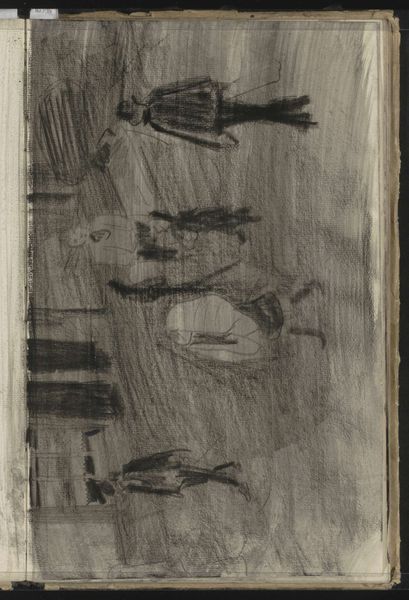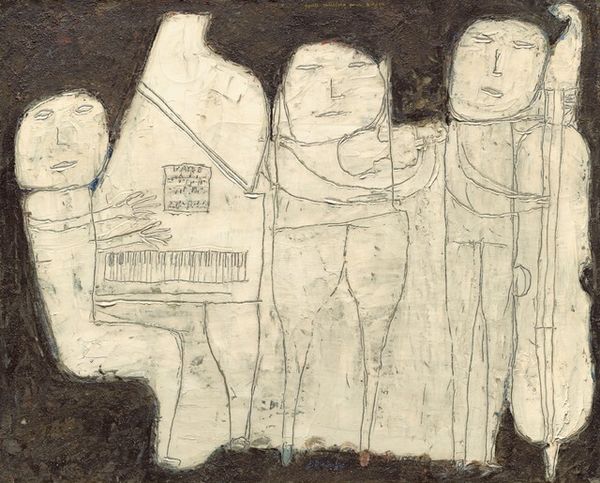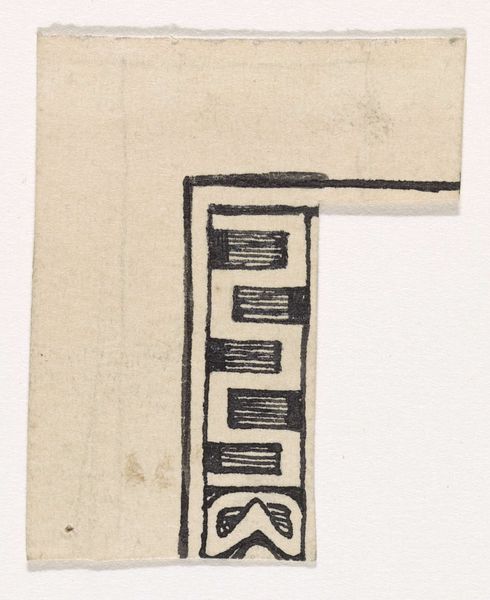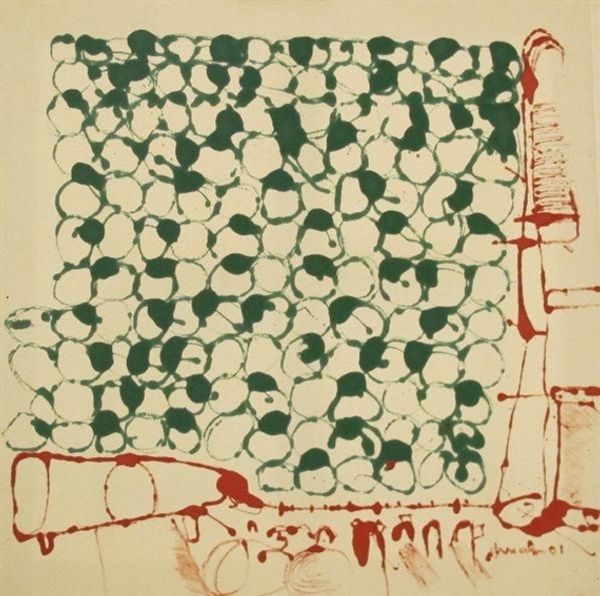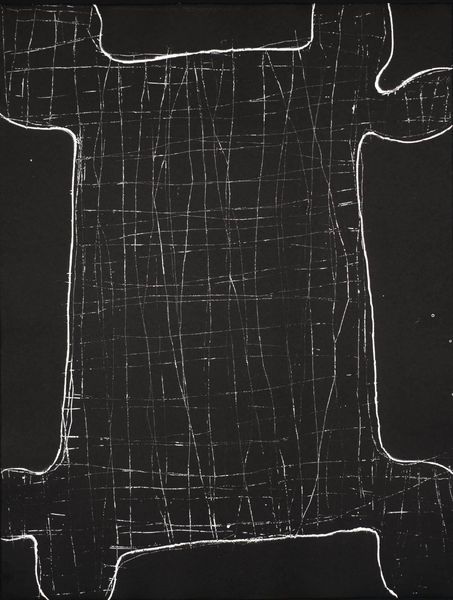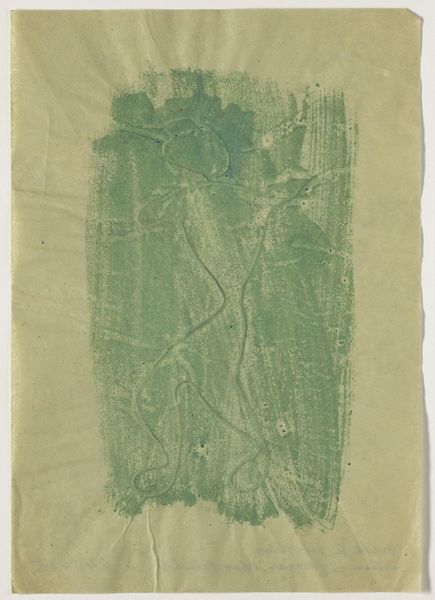
graphic-art, print
#
graphic-art
# print
#
coloured pencil
#
geometric
#
abstraction
Copyright: Hiroyuki Tajima,Fair Use
Curator: Let’s look closely at Hiroyuki Tajima’s “Benibe B” from 1961, a graphic print that really emphasizes material and process. Editor: This piece is fascinating! The red is so dominant and earthy. What particularly catches my eye are the almost mechanical impressions against the flat background. What can you tell me about this piece? Curator: Note how Tajima engages with the materiality of printmaking. This isn't a clean, polished surface; we see the texture, the wear of the printing plate. It blurs boundaries between high art and functional design. We can explore the labour inherent to this technique and reflect on art production within a social context. Consider too, the repeated geometric shapes; could this indicate the rise of industrialism impacting artistic creation, and maybe a critique of mass production, even in something considered "art"? What kind of material engagement does it suggest to you? Editor: That’s a really interesting point. I hadn’t thought about it in terms of the labour involved. The textures give a very physical impression. I like your perspective about production. How does this then speak to the viewer’s experience? Curator: The roughness and tactile quality invite a slower, more deliberate engagement. Instead of pristine perfection, we're presented with evidence of the artist's hand and the materials' inherent properties. The small variations, maybe inconsistencies in the ink transfer, become significant. Perhaps it elevates a sense of unique artistic engagement instead of a focus on perfection, even with geometrical repetitions. Do you feel invited into that space as a viewer, aware of both the work and your relationship to the materials represented? Editor: That's given me so much to think about, reframing my appreciation of this and thinking about the art-making process as something deliberately imperfect. I never expected such depth from this perspective. Thank you! Curator: My pleasure. By focusing on the materials and production, we unveil how “Benibe B” reflects broader social and economic forces. Material inquiry can definitely reshape our appreciation of art!
Comments
No comments
Be the first to comment and join the conversation on the ultimate creative platform.

